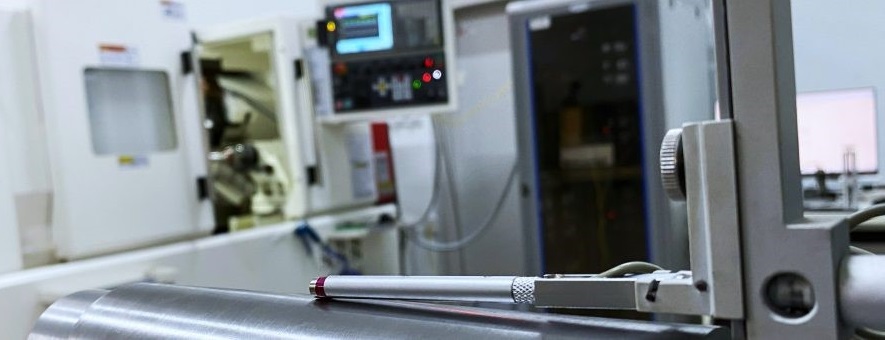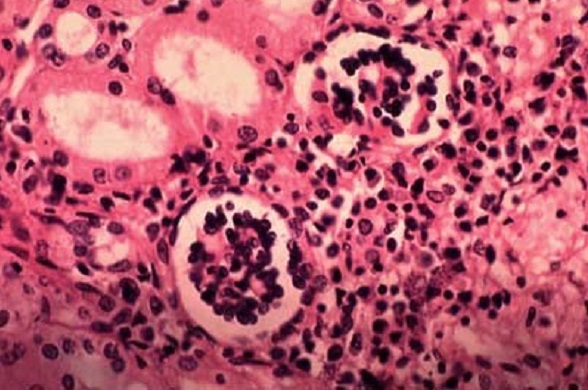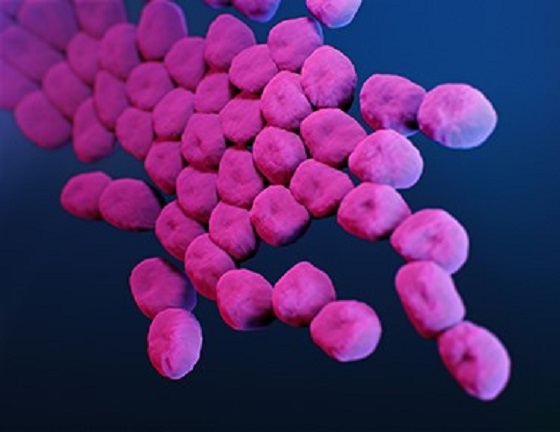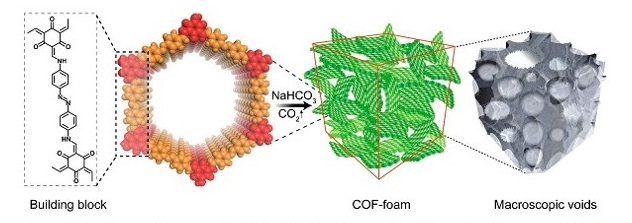
Schematic of foam synthesis
The growing demand for sustainable green methodologies has increased the use of enzymatic technology in industrial processes. In a collaborative effort, a team of researchers has developed a foam to soak in biocatalyst molecules which holds potential for biofuel production.
Biocatalysis is the process of using natural substances from biological sources or whole cells to speed up chemical reactions. However, naturally available enzymes are highly sensitive to acidic or basic solutions, high temperatures, and organic solvents, which limits their industrial application.
“Since enzymes are larger in size, they require large pores in the material to enter. We have created a COF (Covalent Organic Frameworks)-foam material that contains small, medium, and large pores, scientifically referred to as micro, meso, and macropores,” informs Dr Rahul Banerjee, the lead researcher.
In this foam material, enzymes are loaded, and they use the large pores, particularly the macropores, to enter it. Multiple enzymes can enter this foam material simultaneously.
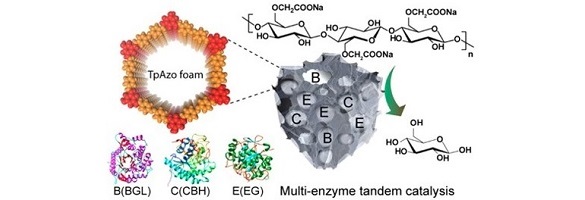
Multi-enzyme immobilized foam for tandem catalysis: cellulose-to-glucose production
“We then assessed their performance in biocatalysis and their ability to withstand harsh conditions once inside the foam. Ultimately, we successfully produced glucose with the enzymes enclosed within the foam,” adds Dr Banerjee.
Unlike traditional COFs that only possess small pores (micropores), this one immobilizes multiple enzymes with greater efficiency. The enzymes showed extended stability inside the foam, with the immobilized enzymes remaining active for up to 120 days at room temperature (25°C), while the same enzymes became inactive after a few days when not immobilized.
“The multi-enzyme immobilized foams were successfully employed in a one-pot tandem conversion from carboxymethylcellulose to glucose, demonstrating high recyclability. This breakthrough opens up new possibilities for diverse industrial applications such as biofuel and chemical production. The study could help develop cost-effective and environmentally friendly biocatalysis-based technologies for a wide range of industrial applications,” the researchers explain.
The members of the study team are from the Indian Institute of Science Education and Research (IISER), Kolkata; CSIR-National Chemical Laboratory (CSIR-NCL), Pune; CSIR-National Institute for Interdisciplinary Science and Technology (NIIST), Trivandrum; and Nottingham Trent University, UK.
The team proposes utilization of foam as a promising host matrix for enzyme immobilization and biocatalysis.

Left to right: Satyadip Paul, Prof. Rahul Banerjee, Mani Gupta, Prof. Supratim Datta
The research team consists of Satyadip Paul, Mani Gupta, Kaushik Dey, Ashok Kumar Mahato, Saikat Bag, Arun Torris, E. Bhoje Gowd, Hasnain Sajid, Matthew A. Addicoat, Supratim Datta and Rahul Banerjee. The study has been published in Chemical Science. It has received funding from DST INSPIRE, CSIR, Science and Engineering Research Board (SERB) Core Research Grant, SERB SUPRA, and Ministry of Education (MoE)-STARS.
India Science Wire
ISW/SM/IISER/Biocatalysis/Eng/22/06/2023


